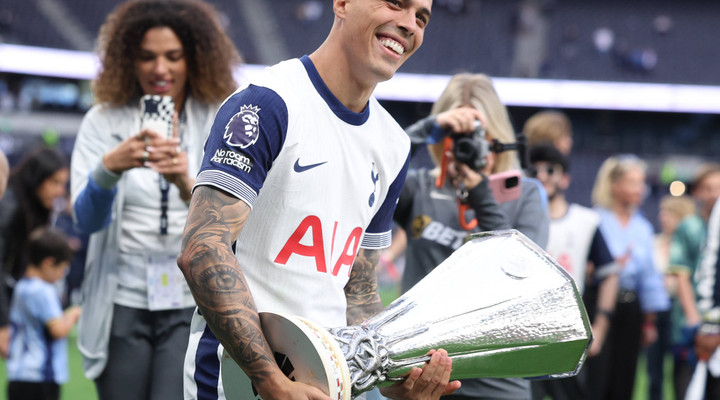F1 team performance analysis: Reading constructor standings for better bets

In modern Formula 1, the Constructors’ Championship stands not only as a measure of team supremacy but also as a potent source of betting insight. Understanding how these standings evolve, discovering momentum and spotting underlying trends can allow bettors to out-manoeuvre the market – especially when placing bets on constructor futures, race-outcome bets or prop markets.
McLaren’s commanding lead in the 2025 season – and the unexpected decline of Red Bull – illustrates how reading the standings can translate into real betting advantages.
The 2025 Constructors’ Championship standings are telling. McLaren lead the table, with Ferrari, Mercedes and Red Bull trailing. This reflects a season of consistently high finishes and reliability from both Oscar Piastri and Lando Norris. Their combined performances have made McLaren the standout team of the season.
Love Formula 1? Find the best F1 betting sites and bet with welcome bonuses today.
Bettors who backed McLaren early, before their dominance was fully established, likely secured strong value. By mid-season, sportsbooks had dramatically shortened McLaren's odds, with Ferrari and Mercedes priced as long shots.
More than raw point totals, studying how the standings progress reveals hidden opportunities. McLaren’s early-season momentum was built through strong weekends, including Piastri’s win in Saudi Arabia in April. That race outcome highlighted their resilience under race pressure, with Piastri finishing ahead of Max Verstappen. It was an early indication of the team’s form. Bettors who followed testing performance and early qualifying sessions could spot the difference in team form relative to Red Bull, who looked unsettled from the outset.
Similarly, the Belgian Grand Prix at Spa reinforced that dominance. Heavy rain delayed the race by over ninety minutes, but when the green light came, McLaren again delivered.
Piastri won the race ahead of Norris, marking their sixth one-two finish of the season and significantly extending their lead in the standings. By that point, McLaren had a clear advantage over Ferrari and Mercedes. Bettors who anticipated this trend before Spa would have benefited from higher odds in various markets. The reliability of both cars and the pit wall’s tactical decisions confirmed McLaren as the most consistent outfit on the grid.
Formula 1 tips: Jennie Gow delivers her predictions for each race weekend
Track records: Studying the circuits for team strengths
Constructor standings also help identify track-specific advantages. Historical data shows McLaren performing exceptionally at Spa and other high-downforce venues. Their success on street circuits, as seen in Monaco, highlights their adaptability and set-up efficiency.
While Piastri and Norris finished behind Verstappen at Imola, the team’s performance was strong enough to reinforce their suitability to certain track types. Bettors studying these circuit-performance patterns can better time their race-specific wagers. For instance, placing bets on McLaren to record the fastest pit stop or lead the most laps at certain circuits could yield returns when supported by standings momentum.
Understanding which constructors perform well under particular weather or tyre conditions is another nuance hidden in the standings. For example, McLaren showed an edge in managing tyre degradation – especially in races with variable conditions like Spa and Silverstone. A bettor familiar with both the technical characteristics of the car and the evolving weather forecast could leverage constructor performance data to place specific bets on final classification, safety car deployment or even winning margin.
Constructor standings also illuminate team depth and balance. McLaren have benefited from strong scoring by both Piastri and Norris. The close battle between them in the Drivers’ Championship – where Piastri narrowly leads – indicates a healthy intra-team competition, which supports consistent constructor scoring. Bettors often misinterpret a strong single driver as indicative of constructor strength, when in reality scoring consistency across both drivers is critical for maximizing returns in futures and total points markets.
FIRST's recommended Formula 1 betting sites
Our sports betting experts have selected their top three picks for Formula 1 betting. You can see the full list and get welcome bonuses on our Formula 1 betting sites guide.
-
Bet here
+18 New customers only. Register, deposit with Debit Card, and place first bet £10+ at Evens (2.0)+ on Sports within 7 days to get 3 x £10 in Sports Free Bets & 2 x £10 in Acca Free Bets within 10 hours of settlement. 7-day expiry. Eligibility exclusions & T&Cs Apply. Full T&C apply
-
Bet here
18+ New UK+ROI Customers only. Certain deposit methods & bet types excl. Min first £5 bet within 14 days of account reg at min odds 1/2 to get 6 x £5 free bets. Free bets available to use on selected sportsbook markets only. Free bets valid for 7 days, stake not returned. Restrictions + T&Cs apply. Full T&C apply
-
Bet here
18+ New Customers only. Certain deposit methods & bet types excl. 1st Deposit & bet £5+ at min odds 1/2 on sports within 14 days of account reg & get 4 x £5 free bets. (selected sports market only.valid 7 days),Restrictions + T&Cs apply. Full T&C apply
In contrast, Red Bull’s performance has slipped compared to previous seasons. While Verstappen continues to collect points, the team have suffered from underperformance by their second driver and internal instability. Reports of managerial changes, including speculation around Christian Horner’s status and his eventual exit, have coincided with a downturn in Red Bull's consistency.
The car’s performance on certain circuits has failed to match rivals, which is visible in their points plateauing mid-season. Bettors following these off-track narratives alongside the standings could have identified Red Bull as a team to fade in constructors’ markets or to avoid in podium and top-six finish markets.
Another profitable insight arises when midfield constructors begin to close the gap. If the likes of Williams and Kick Sauba begin to register double-points finishes or benefit from strategic upgrades, they may offer betting value – particularly before sportsbooks adjust their odds.
For example, Kick Sauber’s improved results through Nico Hulkenberg and Gabriel Bortoleto have positioned them to challenge the teams ahead. Bettors who recognised this upward movement early could have capitalized on podium or points finish markets. These shifts are rarely captured immediately in the odds, providing alert bettors with windows of opportunity.
Learn: How race weather conditions affect your F1 betting strategy
Keep an eye on car upgrades
Monitoring upgrades is another crucial aspect. When teams announce new aero packages or engine mappings – often visible after the Friday practice sessions – constructors can see sudden performance boosts. These incremental improvements are reflected in constructor points over two or three race spans, offering another trend bettors can act upon before lines adjust.
Timing is critical and often informed by changes in the standings. Before the season began, McLaren and Ferrari had similar odds in the constructors’ market, while Red Bull were favoured. However, McLaren’s preseason testing form and technical upgrades hinted at a breakthrough. Bettors who acted on these indicators before the opening rounds likely found better value than those who waited for the standings to reflect race outcomes. Once McLaren secured multiple one-two finishes, odds for them in the futures market shortened dramatically, closing the window for meaningful returns.
In-race and race-week betting opportunities also arise from interpreting standings changes. Piastri’s win at Spa not only cemented McLaren’s lead but influenced markets for subsequent races. Outright and podium bets placed before Spa’s outcome would have carried higher returns. Understanding which constructors can recover from poor grid positions – based on previous race data – also allows bettors to profit from in-race betting markets, particularly when a team is known for effective tyre strategies or safety car timing.
The role of technical analysis should also be considered. Research such as tyre energy modelling and pit stop strategy prediction – used by teams and analysts – can help bettors understand which constructors are most likely to perform consistently. When paired with standings trends, this data provides further layers of insight for bets on fastest lap, pit strategy or margin of victory. A growing number of bettors now incorporate machine learning models trained on past race data, tyre compound choices and weather forecasts to simulate likely outcomes and bet accordingly. While not foolproof, these methods complement standings interpretation effectively.
Off-track developments also influence standings and betting decisions. Red Bull’s internal changes and drop in form reflect the impact of organisational issues on performance. Bettors who tracked such developments could have adjusted their constructor bets accordingly, hedging or reallocating their positions.
Similarly, if a team faces a penalty or disqualification standings provide a pre-penalty snapshot that sharp bettors can exploit if news leaks early.
Ultimately, constructor standings offer more than just numeric rankings. They tell a story of form, momentum, consistency, reliability and team health. Bettors who follow the evolution of standings closely – watching race-to-race changes, track-specific scoring trends and team dynamics – can gain a competitive edge.
By using constructor standings not just to observe but to anticipate, bettors enhance their strategy – backing futures before dominance fully emerges, timing race-day bets with form patterns and identifying midfield risers early. Careful analysis of standings trends, combined with circuit knowledge, driver performance and strategic forecasts, allows for smarter, data-driven betting decisions.
With Formula 1 becoming ever more technical and competitive, the gap between what the standings show and what they predict is narrowing. But for those who know how to read between the lines, they remain one of the most reliable tools in the bettor’s arsenal.






 Leeds betting statistics - 2024/25
Leeds betting statistics - 2024/25
 Tottenham betting statistics - 2024/25
Tottenham betting statistics - 2024/25
 Everton betting statistics - 2024/25
Everton betting statistics - 2024/25
